A Trio of Lockheed Hudsons in 1/72 Scale
Project Overview
This project represents something I have never done before: building more than one kit at the same time. I tend to be a linear builder. I build one kit at a time, and when it is done I clean up the workbench and start the next one. I have watched many of you iModelers build two, three, or more kits at a time, so I thought I would give it a try. I have three 1/72 kits of the Lockheed Hudson, one from MPM, one from Revell, and one from Italeri. According to Scalemates, all three of these kits come from the same MPM molds. The MPM kit came out in 2006, Italeri in 2006, and Revell in 2013. I talked myself into building all three at the same time because I could build them like an assembly line, after all, they came from the same molds and should all build the same. It didn't take long to realize that the parts may all look the same, but they didn't fit the same. The fit, the quality of molding, and the surface detail, was different on each kit. Building these three models was fun but took much longer than I planned. The good news on these kits is that they each had all of the parts needed to build all of the early and late marks of the Hudson, so I could build any Hudson from any of the kits. If you would like to see the in-progress build on these kits, please visit the Works in Progress Group-Aircraft, and look for "A Trio of Hudsons".
Historical Background
I have always liked the Lockheed Hudson and the Lockheed Ventura. I am embarrassed to say that until a few weeks ago I thought the Hudson and the Ventura were versions of the same airplane. I always thought that the Hudson was an early version of the Ventura, after all, they look the same. When I started researching the Hudson, I discovered the Hudson and Ventura are very different planes. But they are related. The Hudson came first and was so successful that a larger, stronger plane was developed that was based on the Hudson. This newly designed plane was the Ventura.
The Hudson was a militarized version of the Lockheed Model 14 Super Electra passenger plane. In 1937, Lockheed was trying to build interest in their new passenger plane, so they sent diagrams and information about the Model 14 to various aviation publications. They also sent a diagram of a potential light bomber based on the Model 14. The British, who were gearing up for war, saw the diagrams and expressed an interest in the light bomber. The British initially ordered 200 planes in 1938, with deliveries beginning in 1939. Only 78 of the airframes had been delivered by the start of the war in Europe. Since America was officially neutral until 1941, the deliveries took an interesting route to get around American neutrality restrictions. The planes were flown to the US/Canadian border, then towed across the border using tractors and horses, taken to an RCAF base where they were disassembled, loaded on ships, and taken to England. In all, about 1500 Hudsons were eventually delivered to England.
The Hudson was used in a variety of missions, including: light bomber, heavy fighter, photo reconnaissance, multi-engine and gunnery trainer, anti-submarine aircraft, search and rescue, special missions (insertion of SOE agents), and several other missions. It was used by Britain, Canada, the US, and a variety of other countries.
Notable accomplishments of the Hudson:
-First British aircraft operating from the British Isles to shoot down an enemy aircraft (1939)
-Provided top cover for the Dunkirk Evacuation
-Shot down a FW Condor near Ireland (1941)
-Possibly the first aircraft to capture a submarine while in flight. A single Hudson attacked a U-Boat near Iceland. The U-Boat crew waved white flags to surrender. The Hudson guarded the sub until the Royal Navy arrived to take possession of the sub.
-A PBO-1 (US Navy version of the Hudson) of VP-82 was the first US aircraft to sink a U-Boat (U-656)
-When the Bismarck was discovered near Bergen in Norway, the Fleet Air Arm launched an attack by two squadrons of Hudsons and a squadron of Whitleys. The weather was poor, and only two Hudsons attempted to drop bombs during the attack. It was later discovered that the Bismarck had already left the anchorage.
-An hour prior to the Pearl Harbor attack, during the Japanese landings in Malaya, an Australian Hudson attacked and sank a Japanese transport. It was the first attack by an Allied aircraft in the Pacific Theater.
-In 1942, near New Guinea, an RAAF Hudson was jumped by a flight of 9 Zeroes led by Saburo Sakai. This should have been a quick kill for the Zeroes, but the Hudson gave the Zeroes all they could handle using creative flying and shots from both their turret guns and their nose machine guns. After a 10 minute running battle the Hudson was eventually shot down with the loss of the crew. Following the war, Saburo Sakai personally wrote the Australian government and asked that the crew be identified and awarded the highest national military honor for their bravery and skill.
One interesting story concerns a man named Sydney Cotton, who before the war traveled to Germany and other countries. He sensed that a war was coming, and took numerous photographs of military airfields and facilities in Germany. After the war started, Cotton convinced the RAF that he could use planes such as the Hudson to do the same type of photographic work, this time from the air. The RAF wanted to disguise the fact they were creating an air reconnaissance unit, so Cotton's squadron was named #2 Camouflage Unit. Officially they were testing new camo schemes for their planes which included the Hudson and the Spitfire. Their planes actually displayed a number of unique and striking experimental paint schemes. Hudsons arrived in England without a turret, and the British turret was installed after arrival. The demand was so great for these planes, that the "Camouflage Unit" often rushed them into service without a turret. These Hudsons would fly with a metal plate to fill the hole where the turret should have been until time was found to add the turret. Many photos of this unit's aircraft often display aircraft without a turret. By 1941, this unit was still a secret, and was renamed the Photographic Development Unit (PDU). Their actual purpose was revealed in late 1941, and they were renamed #1 Photographic Reconnaissance Unit. I used one of their experimental paint schemes of one of my Hudsons.
The Project:
I had several paint schemes that I wanted to do. I thought I could build all three models quickly, even though they came from different manufacturers. When I compared the parts in the three kits, they did all look identical. It turned out the parts were all very different in regards to fit, detail, and casting. Probably the best of the three came from Italeri, with MPM second, and surprisingly, the worst of the three came from Revell. Each of the planes I wanted to model had different configurations for engines, exhaust, weapons, and a variety of other items. Matching these configurations was made easier because all three kits had all the various parts needed to create all of these versions of the Hudson in each kit. I wanted to try a variety of building techniques, painting techniques, and weathering techniques. In addition, I wanted to try to design and print some parts that I could print on my 3D resin printer.
Individual Models:
Hudson Mk.I (Revell Mk.I/II)
-320 Squadron (Dutch)
-Configuration: Upper turret, no navigation dome, early cowlings and exhaust
-Camouflage: Standard Dark Earth/Dark Green over Aluminum (painted) undersurface
-Weathering: I wanted to use a medium amount of weathering, using mainly underpainting and artist oils.
Hudson Mk.VI (Italeri Mk.IV/V)
-163 Squadron, late 1942, Asmara
-Configuration: No turret, navigation dome, late cowlings and exhaust, no de-icing strips
-Camouflage: Dark Earth/Middlestone over Azure
Weathering: I wanted to depict a well-used, dusty machine that we often see in photos of planes in North Africa. I used a wide variety of products, including AK weathering products, artist oils, pastel chalk, and weathering pencils.
Hudson Mk.I (MPM A-29/PBO-1)
-Number 2 Photo Reconnaissance Unit
-Configuration: No dome, no turret (location closed with plate), cameras added to each side of fuselage
-Camouflage: Experimental camo of light slate overall
-Weathering: Pre-shading and panel line wash
Overall, this was a really fun project that took much longer than planned. Tomorrow it is back to one model at a time. Cheers everyone.

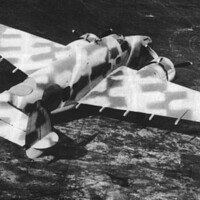



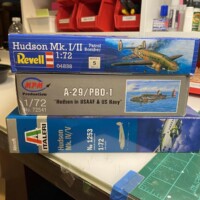







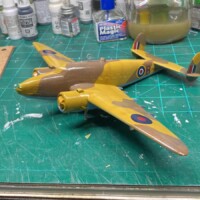

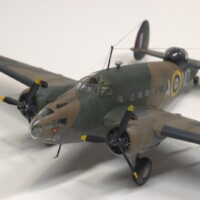

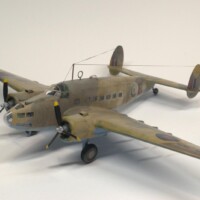


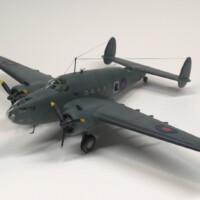




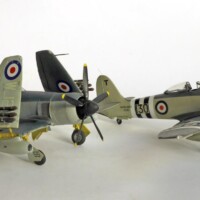
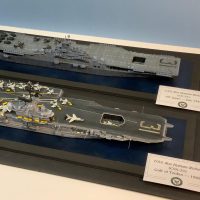
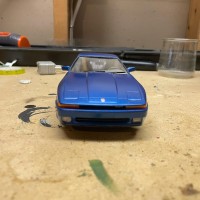
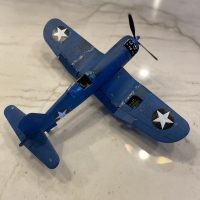
Bravo, George @gblair. What a way to ring in the New Year!
All three look outstanding. Great text as well. Appreciate the heads up on Mr. Cotton. And you certainly are getting to be an expert at 3D printing. Looking forward to your first single build of 2024! Any clues?
Excellent George (@gblair), these turned out beautiful. And a terrific way to start the 2024 year. I am really going to have to see if I can get into 3D printing soon. So much better than trying to make these little pieces from scratch.
Wow, fantastic modelling George, great way to get 2024 up and running 😊
An excellent way to start 2024, George @gblair
All the extra work you put into those models was absolutely worth it.
Especially your own 3D printed parts are a valuable addition.
It was a pleasure to follow your building thread, very learningful.
Well done on all three and a great article.
Thanks for the kind comments,
Eric (@eb801)
Carl (@clipper)
Guy (@thom)
John (@johnb)
I am looking forward to your Airfix Hudson, Carl. It is amazing how much extra work you have done on it. 3D printing is very cool. I am just starting to design my own simple stuff, but you can find a lot of print files online, many of which are free.
I already have 5 or 6 models ready to start. I want to do an EMS vehicle for the Public Service Vehicle Group, as well as a brush fire truck. I want to do a couple of F-16s for the F-16 group. The EMS vehicle will be first, followed by an F-16. After that, we will see how things flow together. I also have an old Airfix and an old Heller I want to do.
I am looking forward to all the cool things that you all will do also. Cheers everyone.
What an awesome project with great results! I'm a lover of Lockheed stuff - the model 10, 12, 14, Ventura, Lodestar, Connie. Got some jumps from a model 10 Electra, Lodestar, and a Super Connie, and got some left seat time in a Lodestar. Quite a few years ago I built the old Classic Airframes Hudson as the PBO-1 you mentioned that was the first US aircraft to bag a U-boat.
Happy New Year!
1 attached image. Click to enlarge.
Thanks. Great looking model, Chas (@chasbunch). The Classic Airframes was 1/48, I think. I would like to do a 1/48 Hudson, but the prices on Ebay are well north of $100. I have several of the Revell/Monogram Venturas that I want to do soon. I was a pilot in the Air Force, but I never had the urge to jump out of one.
Chas Bunch (@chasbunch)
I have this exact same 1/48 scale C/A kit in the stash, and I have wanted to build it up wearing the same markings that you have used for your build. VP-82 was stationed here at NAS Deland for a short while during the early days of the War. When they were here, they flew Hudson's like you have made. NAS Deland was used to train Ventura crews shortly afterwards.
Your model looks great and it's very inspirational. Do you remember any vices or troubles with your project when you built it ?
Here's a link to my Revell 1/48 scale Ventura.
It was such an awesome kit that I had to pick up another one... 🙂
Happy New Year!
hi Louis,
That Hudson build was a long time ago. I don't remember any serious hangups. One thing I remember is opening up the leading edge slots. Typical Classic Airframes stuff, dry fit and adjust as necessary.
Yeah, those Revell Venturas are awesome!
1 attached image. Click to enlarge.
George, for me your project gets the award for 2023’s Best Demonstration of Modeling Skill and Imagination. I have really enjoyed following your progress from start to finish. BTW, I live just a few miles from Williams Field (now called Phoenix-Mesa Gateway Airport), and thank goodness that auto cooling systems are now much improved! Happy New Year to you and your family.
George, great work on all three Hudson's. I really enjoyed reading your article, as well. @gblair
Great trio of Hudsons George! Wonderful background too. I've always liked the Hudson and the Ventura. Like you I always thought the later was just a development of the earlier plane. That's what I love about this sight, besides the models, the research behind the builds. I learn something new almost every time I read an article.
Terrific project successfully completed, George. I’m trying to build three models at once for my Ford vs Ferrari idea and it’s taking me much longer than I expected. I really enjoyed reading your article, you must’ve been pleased at how well your Hudson’s turned out.
Excellent result all around, George. They’re all standouts.
Thanks for the positive comments.
Matt (@matthewfdyer)
John (@jdtruby)
Clint (@curtisshawk)
George (@chinesegeorge)
John (@j-healy)
I had some really good times in Phoenix, Matt. I spent 2 years at Luke AFB, then a year at Williams for pilot training. There were a few days in the summer that we couldn't take off in the T-38 beause the temp was so high. The engines don't develop as much thrust at high surface temps, and the wings don't develop as much lift. And the T-38 didn't have a lot of wing anyway. I appreciate your kind comments about imagination and modeling skill, but I have seen better and more imaginative kits from you and other modelers on iModeler. I am always on the lookout for something that is a little different to build. I always figure if I throw average skills at an unusual subject, it will probably come out pretty well.
You are right, Clint. Learning about what we are modeling is a very cool part of the hobby.
Good luck, George. I got really bogged down on this triple build, which took a lot longer than I thought. Just when I was running out of steam, I got to the painting and weathering, which I really like. I also ran into problems with the chaos that my workbench became. I tend not to put anything away or clean until the model is done, then I clear the decks, clean, and start over. It became overwhelming when I tripled the mess.
What an impressive project, with equally impressive results, George @gblair! 🏆 Great scale modeling's what that is! 🤩
Very impressive project @gblair, lots of obvious solid work and a great result on all.
Thanks, Gary (@garybrantley). I don't know how impressive they are, but they were fun to do. I don't want to do a trio again for a while.
Thanks, Tom (@tcinla). This turned out to be a fun project, but there were days it didn't seem that way.
Amazing job on all three Hudsons, George! Those MPM molds are definitely challenging to put together, a task that was beautifully carried out by your superb skills! Your build thread was a joy to follow and the use of 3D printed patts was a total success.
Congratulations!
Thanks, Spiros (@fiveten). It turned out to be more fun than I thought. Thanks for following along through the ups and downs of the build.
Very impressive trio- bravo!
Well done George, all three look good, here's my build from 2016 of the Italeri boxing.
1 attached image. Click to enlarge.
Thanks for the comments, David (@dbutlr).
Thanks, Allan (@kalamazoo). Your Hudson is great! From my experience, it looks like you picked the best of the three releases to build, and your results are great. I also have a couple of the Airfix Hudsons, but they can wait for a while. Carl (@clipper), is doing an Airfix Hudson in WIP, so I am excited to see how his turns out.
Outstanding! Great stories too!
Thanks, Bernard (@lis). I appreciate your comments.
George R Blair Jr (@gblair)
This is an excellent article. I enjoyed reading it. I also enjoyed your build journal. They are always very informative, and I learn something from you on every one of them. Thank you.
I have the 1/48 Classic Airframes version of the Hudson in "Ye Olde Stash", and plan to someday build it. I want to build it as a RAF style camouflaged plane from VP-82, since they were stationed right here at NAS Deland for a short time at the beginning of the War. I believe the very same markings are present on the box of the MPM kit you just built.
I like how you take the time to research your builds, making them as authentic as possible when you build them. Doing the research is just as much fun as the building for me...
I'm sorry to hear that building multiples of the same kind didn't work for you. I do it a lot, and enjoy it, because it seems faster to me, but we are all different. It's faster in the beginning and the middle when you are painting two or three of the same things, like wheels for an example. Then things slow down when you are painting the exteriors if you are painting different schemes on them.
Anyhow, I wanted to give you a great big "like" so I pushed several of the various buttons.
Thank you for sharing these with us, and I look forward to your next one !
It looks like your New Year is off to a great start.
PS: Before you completed these, I was inspired by you to get another 1/48 Ventura. This time it was boxed by Academy instead of Revell like my last one was. Now I'm saving for a 3D printer and scan / cutting machine. You are making good use of yours, and I hope this will bring my building to the next level.
Take care.
Thanks for your kind comments, Louis (@lgardner). I looked around on Ebay for a 1/48 Hudson, but they are few and far between. Building more than one plane in this case was complicated by the fact that the models built differently, even though they were from the same molds. The other problem was that the planes were all configured differently: Only one had a turret, and one had the cutout for the turret but no turret. Only one had the navigator's dome. Two had the same engines, exhausts, and cowlings, but one was different. I added the cameras to one. I found it easier to take one model up to a certain point, then move the the next and bring it up to the same point, then the third. I found it difficult to keep all of the configurations straight, so I noted the configuration for each build on a notecard that I kept with the model during construction. I think it would be easier to work on 2 models that were completely different. Today I am working on some stuff for my trains and working on an SUV for the Public Service Vehicle Group. When I finish the SUV I will be diving into an F-16 for the group.
I'm late to the party again. George, what I found interesting is your learning a new skill. The printed seats, props and engines moved the bar up. The construction of the clear noses is impressive. The painting and the use of the Flory washes adds a new dimension to finishing the kits. Finally, your consistency in building all three kits is frosting on the cake. The process of modeling and learning . . . being a student of life/ modeling really stands out. Looking forward to seeing those F-16 kits too.
Hi Stephen (@stephen-w-towle): Glad you stopped in. It was a really interesting project because I had never built more than one kit at a time. It was also a cool opportunity to try various building and weathering techniques. 3D printing is cool. I am just now getting where I can design simple objects that I can use in a model. I would like to be able to do things like ejection seats, complete interiors, and so on, but I am a long way from doing stuff like that. I am doing a Chevy Tahoe EMS vehicle next, then the F-16 will be on the work bench. Thanks again for the kind words.